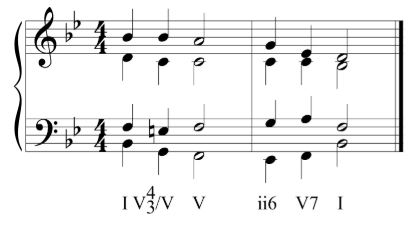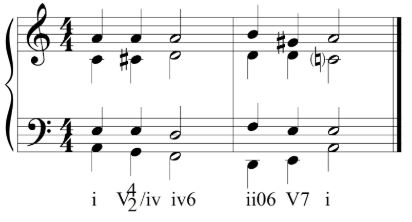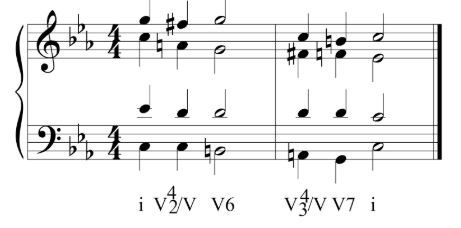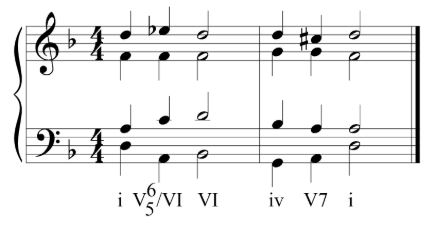Integrated Aural Skills 2019-20
Score Study and Piano Practice -- Secondary Dominants and Root Movement
The Importance of Root Movement
In harmonic dictation, the bass line tells us much about chord quality and inversion. In secondary dominants, it can tell us both which key is being tonicized, and the inversion of the secondary dominant.
In any dominant-to-tonic progression, we can easily figure out inversions by examining the intervallic relation in the root movement. Study these examples and play them on the piano to internalize the principles at work.
Ascending Perfect Fourth OR Descending Perfect Fifth (Sol, Do)
This root movement implies V-I or V7-I (or V-i, or V7-i) in the tonicized key. (Think “sol, do” in the tonicized key.)
Descending Major Second (Re, Do OR Fa, Me)
If you hear root movement of re, do in the tonicized key, this may imply V4/3-I (or V4/3-i) in the tonicized key. (Not V6/4: remember that you’ll only find 6/4 chords in pedal, passing, or cadential functions.)
In minor keys only, fa, me root movement in the tonicized key may also imply V4/2-i in the tonicized key.
Descending Minor Second (Fa, Mi)
Fa, mi root movement in the tonicized key implies V4/2-I6 in the tonicized key.
Ascending Minor Second (Ti, Do)
Ti, do root movement in the tonicized key implies V6-I or V6/5-I (or, in minor keys, V6-i, or V6/5-i) in the tonicized key.




